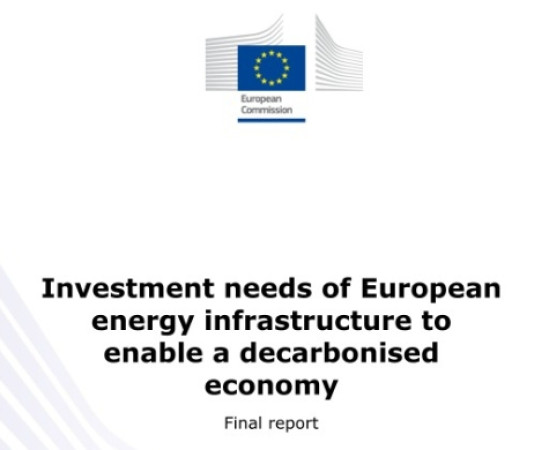
Follow India Renewable Energy News on WhatsApp for exclusive updates on clean energy news and insights
EU Energy Infrastructure Investment: A Path to Decarbonization and Economic Security
Feb 18, 2025
The European Union is confronted with the critical task of modernizing its energy infrastructure to meet ambitious decarbonization goals while ensuring economic and energy security. A recent report from the European Commission outlines the substantial investments required across electricity, hydrogen, and CO? infrastructure to achieve a net-zero economy by 2040.
Key Developments and Investment Needs
1. Electricity Distribution as a Priority
A significant portion of the €1.5 trillion required by 2040 will be directed toward electricity distribution, with an estimated €730 billion earmarked for modernizing grids. This investment is necessary to support the transition to renewable energy and electrification, which will play a pivotal role in meeting the EU's decarbonization targets. The transformation of electricity infrastructure will be crucial to accommodating the growing demand for renewable energy sources.
2. Hydrogen's Rising Role
The European Commission report highlights the growing importance of hydrogen as a key enabler of industrial decarbonization. To meet future hydrogen demands, the EU will need to invest €170 billion in hydrogen infrastructure. This includes the construction of 24,162 kilometers of new pipelines and the repurposing of 14,039 kilometers by 2034. Hydrogen will play a central role in decarbonizing industries that are difficult to electrify, making this investment critical for long-term sustainability.
3. Regional Disparities in Investment
There are noticeable investment gaps within the EU. Germany, France, and the Netherlands account for over half (53%) of the planned investments, with the largest share concentrated in the Western and Northern regions. In contrast, Central and Eastern European countries are lagging behind, with only €12 billion identified in planned investments so far. Addressing these disparities will be crucial to ensuring that all regions benefit from the energy transition and contribute to achieving EU-wide decarbonization goals.
Industry Impact and Strategic Importance
Strategic investments in electricity, hydrogen, and CO? infrastructure will not only modernize grids and integrate renewable energy but will also play a central role in decarbonizing industries. Public-private partnerships and EU funding mechanisms, such as the Connecting Europe Facility, will be vital for derisking high-capital expenditure (CAPEX) projects and fostering investment in these critical areas. Ensuring equitable energy transitions across regions will require collaboration between private entities, governments, and regional stakeholders.
Future Outlook: Preparing for an Electrified and Hydrogen-Enabled Future
As the electrification of sectors accelerates and hydrogen infrastructure scales up, forward-thinking investments will be essential. Cross-border interconnections, digital grids, and energy storage solutions will be key to ensuring that the EU can meet future energy demands while maintaining affordability. This investment in smart, resilient infrastructure will support long-term energy security and decarbonization goals.